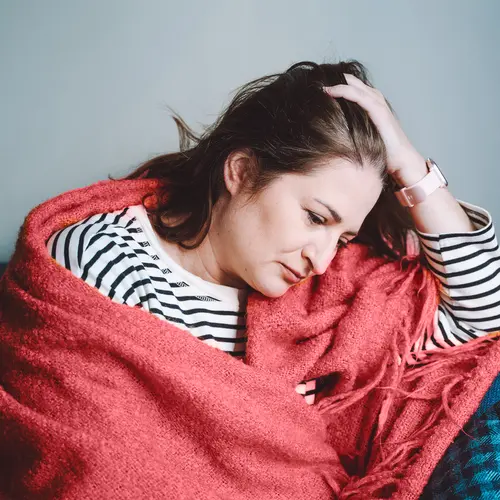What Is Opioid Withdrawal?
Opioid withdrawal is what happens when you stop taking opioid drugs after your body has come to rely on them to feel OK. It can affect you in many ways.
Opioids attach to things called receptors on nerve cells in your brain, spinal cord, and other places to block pain messages that your body is sending to your brain. They also trigger your brain to release dopamine, a chemical that makes you feel good.
Opioid drugs, like oxycodone or morphine, can help with pain when you have surgery or when you've been injured. Some people also use illegal forms of them, like heroin.
Prescription opioids are usually safe to use for a short time and as directed by your doctor. If you need to stop taking long-term opioids, talk with your doctor. To do it safely, you need to take less of the drugs slowly over time as a medical team keeps a close watch over you.
Opioid Withdrawal Symptoms
Common signs of opioid withdrawal include:
- Anxiety
- Goosebumps
- Restlessness
- Insomnia
- Yawning
- Runny nose
- Watery eyes
- Widened (dilated) pupils
- Body aches
- Sweating
- Vomiting
- Belly cramps
- Diarrhea
- Fever
- Shaking
- Fast heartbeat
- Rapid breathing
- High blood pressure
- Hallucinations
- Seizures
These can show up within 12 hours after you take the last dose of the drug.
Many people feel so bad that they can’t give up the drug without help. How serious your symptoms are depends on several things, like:
- How long you’ve been using the drug
- How long the drug stays in your system
- How healthy you are
- Whether you’re quitting “cold turkey” or using other drugs to help you stop taking opioids
How long does withdrawal last?
The symptoms can last a few days to more than 2 weeks. For most people, the worst symptoms get better after a few days.
If a doctor or paramedic gave you a drug to reverse an opioid overdose, your withdrawal symptoms may come on faster and feel worse. They also may cause changes in your blood pressure or heart rate that need medical attention.
Opioid Withdrawal Causes
Opioids include:
- Codeine
- Fentanyl
- Heroin
- Hydrocodone (alone or with acetaminophen)
- Morphine
- Oxycodone (alone or with acetaminophen)
- Oxymorphone
Over time, your body can become dependent on an opioid. The neurons in your brain change to the point where, without the drug, they don’t work the way they should. You might also become addicted, which is when you can’t control your cravings for the drug despite your harmful behavior.
If your body doesn’t get the drug it has come to rely on, you go into withdrawal.
Opioid Withdrawal Diagnosis
Your doctor may diagnose withdrawal based on your symptoms and a physical exam. They might also do a urine test to see which drugs you’ve used.
The American Psychiatric Association has four criteria for withdrawal:
- You’ve stopped or cut back after heavy opioid use for several weeks or more, OR you’ve received an opioid antagonist, a drug that reverses the effects of opioids, such as naloxone.
- You have three or more withdrawal symptoms within minutes or days of stopping, cutting back, or getting the antagonist.
- These symptoms cause serious problems with your daily life.
- The symptoms aren’t happening because of another medical condition or mental disorder.
A test called the Clinical Opioid Withdrawal Scale (COWS) can give your doctor an idea of how serious your case is. It involves 11 common symptoms. Each is given a score, and they’re added up for a total of up to 47.
Opioid Withdrawal Treatment and Home Remedies
Because it can be hard to give up opioids safely, most people should get a doctor’s help to quit. They may:
- Give you drugs, like methadone or buprenorphine, that make your symptoms easier to deal with and help with cravings. Your doctor will give you smaller doses over time until you no longer need it.
- Give you drugs to settle your stomach, if you have vomiting or diarrhea, and recommend fluids to replace the water your body's losing
- Give you drugs to control your blood pressure if it’s high because of withdrawal
You can treat other symptoms, like fever, headaches or joint pain, with common over-the-counter drugs like ibuprofen.
Some other things may help you through:
- Moderate exercise, like walking
- Small, frequent meals or snacks of healthy foods
- Plenty of water or other fluids
- Meditation or something else that helps you stay calm
- A distraction to keep your mind off your symptoms, like talking with a friend
Opioid Withdrawal Complications
Opioid withdrawal isn’t typically life-threatening. But if you have other health conditions, the effects can lead to serious problems. For example, a higher pulse or blood pressure can cause issues if you have a heart condition.
Other complications of withdrawal include:
Vomiting and diarrhea that lead to dehydration, high blood sodium levels (hypernatremia), and heart failure
- Bleeding or leaking amniotic fluid in pregnant women
- Higher risk of overdosing on an opioid after withdrawal because your tolerance is lower. If you start using the opioid again, you’ll need a smaller dose than usual.
If you’re taking opioids it’s a good idea to have a naloxone kit which can be used to reverse a potentially life threatening overdose. If you’ve become addicted to opioids and need help another resource is the SAMHSA treatment finder at 1-800-662-HELP (4357) or www.samhsa.gov/find-treatment.

